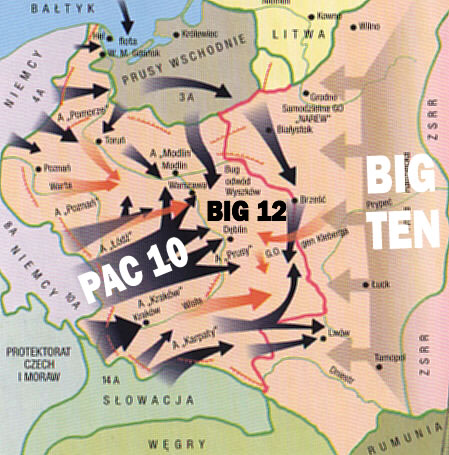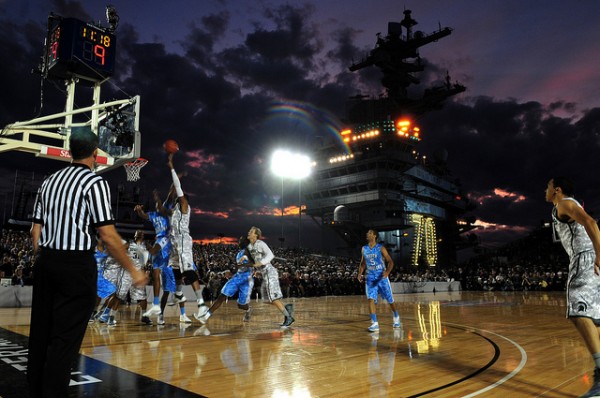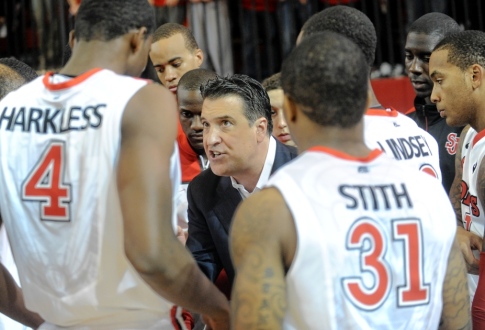Understanding Why College Football Drives the Bus (and How Hoops May Influence Future Decisions)…
Posted by rtmsf on November 18th, 2011A report yesterday from Deadspin brought to our attention that the NCAA makes a lot of money. Not that we didn’t already know that, and not that it wasn’t already publicly available (apparently Will Leitch’s progeny whiffed on that one), but to see the NCAA’s financial statements for 2008 provides an additional layer of context to the invisible hand driving the shifting landscape of college athletics.
If we’ve heard it once, we’ve heard it a million times already — college football drives the bus in conference realignment and executive decision-making, with college basketball sitting in the back with the other ne’er-do-wells. But why is that so? Nearly every metric shows that our sport is not only popular, but thriving. March Madness could be America’s most beloved sporting event. Attendance figures are still on the uptick. The recent Carrier Classic set a ratings record for a November college basketball game (on a Friday night, no less). The NCAA just over a year ago signed a $10.8 billion (that’s a “B”) contract with CBS/Turner Sports to broadcast NCAA Tournament games until 2024 — that’s $771 million annually, in case you were wondering. These are not characteristics of a sport without fans.
The sport will never be as popular as the three major professional sports or even college football, but it’s not a second-class citizen on the landscape either. It produces real dollars that in a rational environment should extensively contribute to long-term decision-making. And yet we’re told again and again that it doesn’t matter. So the question we have is… why? And the answer here is the same answer found in most every other decision we make as a species: the rational pursuit of self-interest.
Take a look at these numbers. In 2008, the NCAA brought in $550 million in television revenue for the NCAA Tournament and another $70 million for its various championships. Keep in mind that the NCAA sees nothing from major college football with its archaic but separate bowl system. By removing all the non-revenue sports and for the sake of expediency, let’s call it a round $600 million that the NCAA made from college basketball that year. That money is then filtered through the belly of the NCAA where it is parsed to pay for everything else — administration of all its championships ($119 million), assorted NCAA programs ($109 million), management ($26 million), and so on. Before long that $600M is cut nearly in half to $360 million, which is then parsed out to 31 D-I conferences using a complicated ‘share’ system based on five years worth of NCAA Tournament performances. Here’s how that system paid out in 2008:





















































